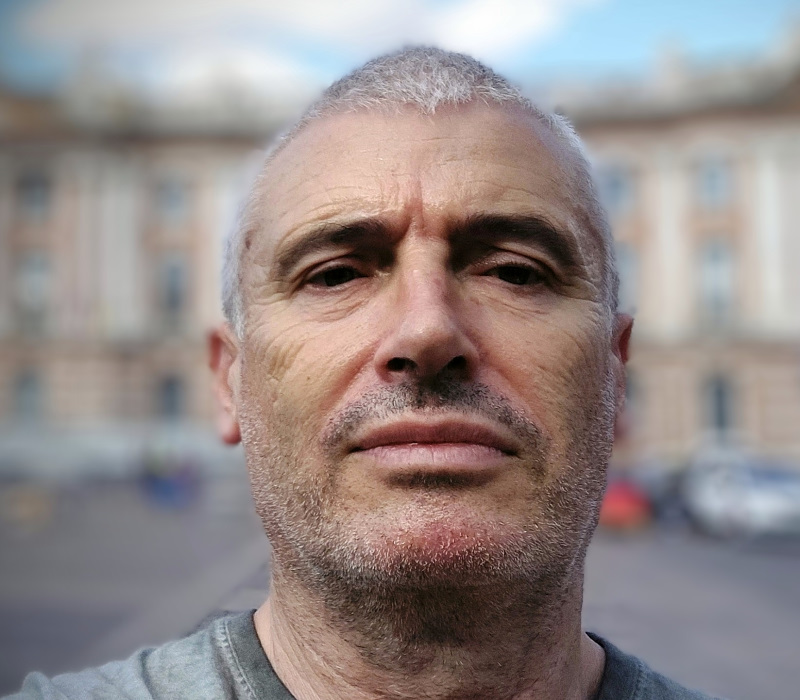Although it sounds like a chapter from a science fiction series, Quantum Computing is a reality that involves computer science, maths, physics and one branch of physics in particular – quantum mechanics.
It is a high-growth area of research and development, given its great potential to solve complex problems more quickly than through traditional systems –Artificial Intelligence (AI) is one of the areas in which enormous applicability and growth is expected.
Let’s get to know Qubit!
What's so radical about it? Well, in classical computing there is the bit (binary digit), which can have the value zero (0) or the value one (1). In Quantum Computing, the qubit (quantum bit) can, like traditional bits, be in state 0 or 1, but it can also exist in an overlap of other states, be subject to measurements with its state, or even be entangled in other qubits. The fact that they can take advantage of the properties listed above makes them much more powerful than traditional bits.
Building quantum computers and other quantum information technologies requires objects that act like qubits. Scientists are now able to harness and control many physical systems that act like qubits, which makes it possible to combine different quantum technologies with the advantages of each type of qubit.
Many quantum particles behave like tiny magnets. This property is called spin. The orientation of the spin either points upwards (corresponding to state 0) or downwards (corresponding to state 1). This results in a spin qubit, as shown in the figure below:
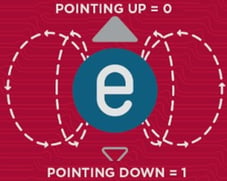
Spin qubit
Another way of getting qubits is to use the energy levels of electrons in neutral atoms or ions which, in their natural state, occupy the lowest possible energy state. If they get stimulated by lasers, they move to a higher energy level and the qubit can be assigned the value 0 (low energy state) or 1 (high energy state), as shown in the following figure:
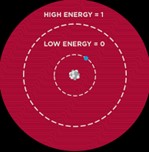
Energy qubit
One of the most fascinating cases is that of photons, individual particles of light that exhibit wave or particle behaviour, allowing them to be used as qubits in various ways. As each photon has an electromagnetic field (wave) with a certain direction (called polarisation), the two states used to define qubits are horizontal polarisation (qubit in state 0) and vertical polarisation (qubit in state 1):
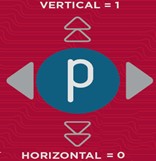
Qubit by polarisation
Still in the field of photons, the path a photon takes is another way of defining a qubit. A photon can be placed in a superposition of states using the beam-splitting technique. Thus, if a photon is on the top path it is assigned state 0, otherwise it is assigned state 1:
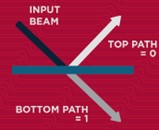
Qubit by beam-splitting
It is also possible to define a qubit using the photon's arrival time, creating a quantum superposition between the state of the photon that arrives earlier and the photon that arrives later, assigning them the states 0 and 1, respectively. In the illustrative figure below, the states 0 and 1 are represented using Dirac notation, respectively “|0>” and “|1>” :
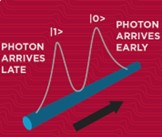
Qubit by arrival time
The use of superconducting materials (which allow electricity to pass through without resistance at low temperature) also makes it possible to create electric circuits that behave like qubits. Unlike the methods mentioned above, these systems are made up of billions of atoms that behave like a single quantum system.
To define a qubit, if the electricity flows clockwise it corresponds to state 0. If the electricity flows anti-clockwise it corresponds to state 1:
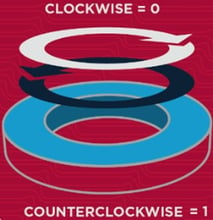
Qubit by electricity flow
Quantum Communication
The modern world, where everything is supposed to be connected – computers, cars, refrigerators, aeroplanes, factory machines, smartphones and other peripherals in different areas of human activity, such as banking, health, the army or education –, is dependent on data networks for communication between the different systems mentioned above.
In order to guarantee the security of these communications, communication protocols and algorithms (Quantum-Safe Cryptography - QSC) are being developed, which will significantly increase the power of the quantum world.
Quantum Cryptography
One of the greatest threats to our connected world is the vulnerability of digital communications. Malicious people or those in the service of criminal objectives are able to steal our identities, money and confidential information.
Cryptography is the science of secrets, allowing information to be transmitted over great distances, but kept secret from anyone other than the sender and the receiver. A large part of current encryption methods are based on factorisation methods that are extremely difficult to solve on digital computers. The possibility of using quantum computers forces us to think about how we want information to be secure.
One form of encryption based on the uncertainty principle is QKD (Quantum Key Distribution), which makes it possible to keep information protected even in the event of an attack by another quantum computer. It should be noted that this cipher is already being used by some organisations (governments and private institutions), and was used in 2007 to protect the results of the electoral process in Switzerland.
The way the QKD cipher works consists of creating a key shared between two entities, which is perfectly secure. One of the parties (sender) sends qubits that are in certain states to the receiver, who observes or measures them. Any other entity that interferes in the process must also read or measure these qubits, which leaves a detectable trail, since this process is based on the uncertainty principle, which states that it is not possible to measure a quantum state without disturbing it. If a disturbance occurs, both parties (sender and receiver) are informed that they must abandon the exchange and delete the shared key.
Quantum teleportation
Quantum teleportation refers to information and not matter, using entanglement to transfer the quantum state of a particle to another particle (this operation destroys the initial quantum state).
Several scientific experiments on quantum teleportation have already been carried out using ion spins and photons – as an example, in 2012 an international team of researchers from Vienna and the University of Waterloo teleported the state of a photon 143 kilometres between two islands in the Canary Islands archipelago.
Teleportation is much more than just fun science (no, it doesn't apply to people yet 😊). It's a very important part of quantum computing architectures, as it allows information to be exchanged between different qubits.
The future is quantum!
What will be the impact of Quantum Information Science and Technology (QIST)?
Historically, all new technologies influence society by promoting transformation and evolution. Today, scientists and engineers are making quantum devices a reality and driving a new technological revolution, the Quantum Age, which will be the innovation engine of the 21st century.
Finding the ultimate potential of these devices is limited only by our imagination and their impact will be far greater than we can predict. The next generation of scientists, engineers, programmers, and mathematicians will deliver the power of the quantum world!
Application in computing
The goal of quantum computers is to be able to answer questions that cannot be answered by classical computers, or whose answers would take too long to produce. For this to be possible, we must complete the huge task of building robust and reliable quantum computers, and developing simulation tools capable of understanding and answering complex questions in a reasonable amount of time, thus leading to the development of various fields such as chemistry, biology, materials science or medicine. These advances could lead to dynamic inventions such as better-performing aeroplanes or better pharmaceutical products.
Software Engineering
In terms of Software Engineering, any quantum computer will require very sophisticated error correction strategies, the creation of algorithms to suppress quantum errors that spoil the magic of quantum computing, and the development of applications that can obtain maximum performance when run on quantum computers.
Quantum supremacy
Quantum supremacy is a concept that refers to the ability of quantum computing to solve problems that classical computers cannot, and can be achieved in two ways: by developing a quantum computer (with a large number of qubits and, at the same time, very low error rates) capable of solving a problem that no classical computer can; or by developing a quantum algorithm, which can be used to solve a problem faster than any classical algorithm.
Google has a 72-qubit computer, the Sycamore, while IBM has the Osprey, with 433 qubits. If the performance criterion was based only on the number of qubits, IBM would have a clear advantage, but Google has made a huge breakthrough by developing an error correction method that allows quantum computers to be used to solve real, everyday problems.
D-Wave (the first company to launch a truly quantum computer on the market, more than a decade ago), currently using its processor called Advantage, also claims to have achieved quantum supremacy. IonQ is also in the race, having announced its 323-qubit computer and offering various quantum computing services in the cloud and/or by subscription. Like IonQ, Microsoft and Amazon also offer cloud services for quantum computing.
But it's not just in the West that progress is being made towards quantum supremacy: several publications from institutions in China claim to have already achieved it; Japan is also in the race through a grouping of companies including Fujitsu, Toshiba, among others; India is also competing with huge government financial support.

